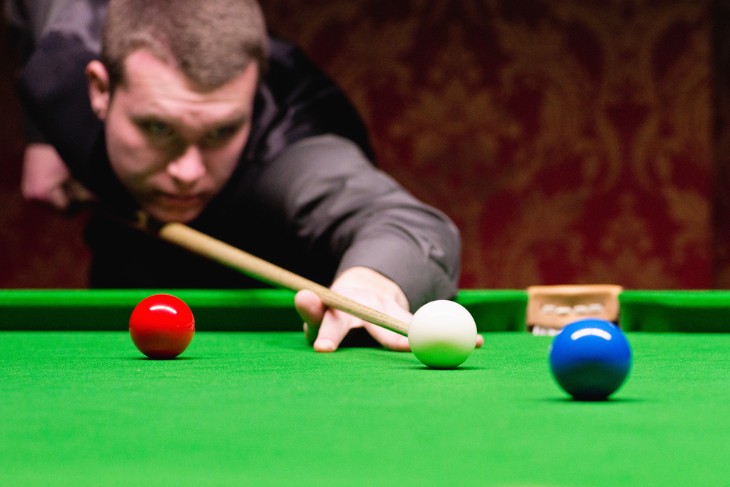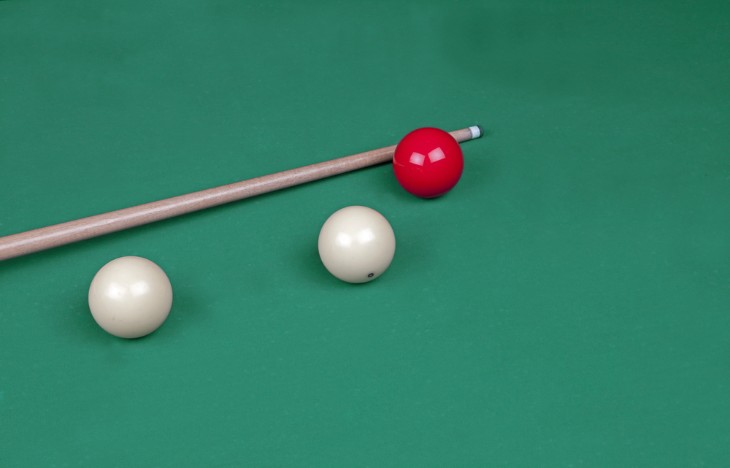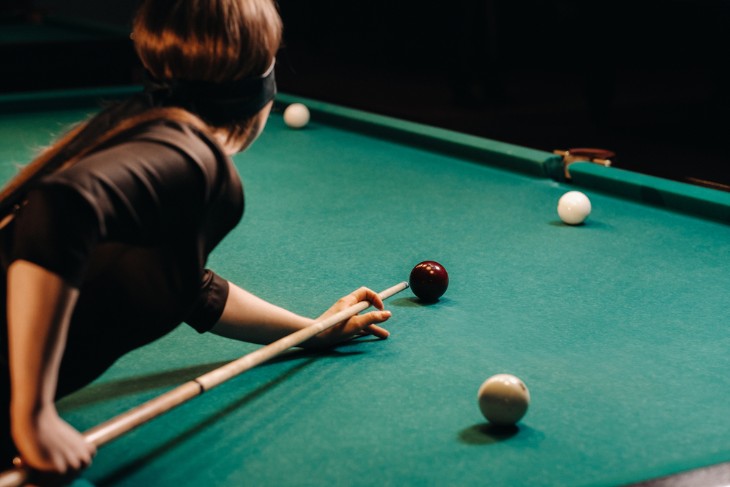In snooker, success starts with the basics, and one of the most crucial is knowing how to hold a snooker cue. This skill is essential for both beginners and experienced players. The right way to hold a cue can make a huge difference in your game. It affects how accurately you hit the ball, how well you control your shots, and how consistent you are.
Holding a snooker cue correctly is not just about having a firm grip. It's about balance and finesse. A good hold helps you make smooth, accurate shots. It lets you control the cue ball better and play with more confidence. When your cue hold is right, you can focus more on your strategy and less on just hitting the ball.
Many players, especially beginners, overlook this basic skill. But taking the time to learn it properly can improve your game. It's like the foundation of a house. If it's strong, everything you build on it will be stronger too. So, mastering the cue hold is your first step towards becoming a better snooker player.
In this guide, we'll explore the right way to hold a snooker cue. We'll cover everything from the basic grip to more advanced techniques. Whether you're just starting or looking to refine your skills, this guide will help you get a better hold on your game. Let's dive in and start building your foundation for a great snooker game.
Mastering the Snooker Cue: From Basic Grip to Advanced Control Techniques
Understanding the Importance of Correct Cue Grip in Snooker
Having the right cue grip is key in snooker. It's the heart of your game. A proper grip helps you control your shots, aim better, and hit the cue ball just right. Think of it as your direct connection to the game. If your grip is off, your shots will likely be off too.
A good grip on the cue does a few important things. First, it gives you the right amount of control. This means you can make both powerful shots and gentle taps with ease. You won't have to worry about the cue slipping or moving unexpectedly. This control is crucial, especially in a game where precision matters so much.
Second, the right grip keeps your shots consistent. When you hold the cue the same way each time, you know what to expect from your shots. This consistency builds your confidence. You start trusting your ability to make the same good shot over and over again.
But remember, a good grip isn't about holding the cue as tightly as possible. It's more about finding the right balance. You want your grip to be firm enough to control the cue but also relaxed enough to allow a smooth, fluid motion. It's this balance that lets you play at your best.
In snooker, small things can make a big difference. And your cue grip is one of those small things with a big impact. Getting it right sets you up for better performance and more enjoyment in the game. So, understanding and perfecting your cue grip is a step you can't afford to skip.
The Basic Grip: How to Properly Hold Your Snooker Cue
Learning the basic grip is your first step in playing snooker. Start by holding the cue lightly but firmly. Your grip should be relaxed, not too tight. Imagine you are holding a bird: firm enough to keep it safe, but gentle enough not to hurt it.
Place your hand about four to five inches from the end of the cue. This is where you have the most control. Your thumb and index finger should form a 'V' shape. The cue rests in this 'V'. This position gives you a good balance between control and flexibility.
Your other fingers wrap around the cue, but they don't all need to touch it all the time. For a regular shot, it's enough to use your thumb, index, and middle fingers. The ring and little fingers can rest lightly or float near the cue. They come into play when you need more power in your shot.
Remember, your grip on the cue is the base of your shot. It should feel natural and comfortable. A good grip lets you move the cue smoothly, which is key for accurate shots. So, take your time to get this right. Practice holding the cue until it feels like a natural extension of your hand. This basic grip is the foundation of your snooker game. Once you master it, you'll be on your way to playing better and more confidently.

Advanced Grip Techniques for Enhanced Control
As you improve in snooker, you might want to try advanced grip techniques. These can give you even more control and precision in your shots. One key technique is adjusting your grip for different types of shots.
For power shots, tighten your grip a bit. This gives you more stability and ensures the cue moves in a straight line. But be careful not to grip too hard. You still need some flexibility for a smooth stroke. Think of it like turning up a dial, not flipping a switch. You want a bit more firmness, but not so much that it stiffens your hand.
When you need more precision, like for delicate shots or spin, loosen your grip slightly. This allows for a softer touch and more sensitivity. It’s like having a softer brush for fine painting. A looser grip lets you feel the cue's movement better and gives you more control over the cue ball.
Another advanced tip is to change your grip slightly as you move through your stroke. Start with a relaxed grip when you're lining up. Then, as you move into the shot, adjust your grip to suit the type of shot you're making. This fluid adjustment can help you make more accurate shots.
Remember, these advanced techniques take time to learn. Don’t rush it. Practice them regularly, and you’ll start to feel when and how to adjust your grip. This extra level of control can make a difference in your game, helping you make more precise and powerful shots.
The Bridge Hand: Creating a Stable Foundation for Your Shots
The bridge hand is as important as the grip in snooker. It's your hand that rests on the table and supports the other end of the cue. A good bridge gives you a stable base for your shots. It's like the tripod for a camera – it needs to be steady for clear shots.
To make an open bridge, lay your hand flat on the table. Spread your fingers wide for stability. Then, raise your knuckles while keeping your fingertips on the table. The cue rests between your thumb and index finger. This type of bridge is great for most shots. It gives you a clear view of the cue and the ball.
For more control, especially on power shots, you can use a closed bridge. Loop your index finger over the cue. This holds the cue more firmly. It's a bit more advanced, but it can help with powerful, precise shots.
No matter which type of bridge you use, keep your hand relaxed. A tense hand can shake, making your shots less accurate. Also, make sure your bridge hand is in line with your shot. It should point straight towards your target. This helps keep your cue movement straight and accurate.
A good bridge takes practice. Work on making it stable and comfortable. With a solid bridge, you'll have a reliable foundation for every shot you make. This can improve your game, giving you more confidence and control on the table.
Perfecting Your Snooker Cue Grip: Personalizing, Practicing, and Avoiding Pitfalls
Fine-Tuning Your Grip for Personal Comfort and Efficiency
Fine-tuning your grip in snooker is about making small changes for better comfort and control. Every player is different, so it's important to adjust your grip to what feels best for you. This personal touch can improve your game.
Start by noticing how your hand feels when you hold the cue. Is it comfortable? Can you move the cue smoothly? If something feels off, try adjusting your grip slightly. Move your hand up or down the cue a bit, or change how tightly you're holding it. Small changes can make a big difference.
Pay attention to how these adjustments affect your shots. Do they feel more controlled? Are they more accurate? The goal is to find a grip that feels natural and helps you make better shots. Don't be afraid to experiment until you find what works best for you.
Remember to keep your grip relaxed. A tense grip can make your arm stiff, which affects your shots. A relaxed hand helps you move the cue smoothly and hit the ball more accurately.
Also, think about the pressure of your grip during different types of shots. You might need a firmer grip for powerful shots and a lighter one for delicate shots. Learning to adjust your grip pressure like this can give you more control over your game.
Fine-tuning your grip takes time and practice. But it's worth it. A grip that's comfortable and efficient for you can help you play better and enjoy the game more. So, take the time to find your perfect grip. It's a key step in becoming a great snooker player.
The Importance of Practice and Consistency in Developing Your Cue Grip
Practising regularly is key to developing a good cue grip in snooker. Like learning to play a musical instrument, the more you practice, the better you become. Consistency in how you hold your cue is crucial. It helps you make steady, reliable shots.
Every time you play, focus on how you hold your cue. Try to keep it the same each time. This consistency builds muscle memory. Over time, holding the cue the right way will feel natural. You won't even have to think about it. This is important because it lets you focus more on your strategy and less on the basics.
Practicing doesn't just mean playing games. It also means doing specific exercises to improve your grip. You could practice holding the cue and making strokes without hitting balls. This helps you concentrate solely on your grip and arm movement.
Remember, small changes can have a big impact. So, pay attention to how different grips affect your shots. If you find something that works well, stick with it. Consistency is what will make that grip become second nature to you.
Also, don't get discouraged if it takes time to get your grip right. Like any skill, it takes practice and patience. Keep at it, and you'll see improvement. A good cue grip is the foundation of a strong snooker game. With practice and consistency, you'll develop a grip that helps you play your best.

Common Mistakes to Avoid When Holding a Snooker Cue
When learning how to hold a snooker cue, it's just as important to know what not to do. Avoiding common mistakes can help improve your game. One of the most frequent errors is gripping the cue too tightly. A tight grip can make your arm tense, which affects your shot's smoothness and accuracy. Remember, the grip should be firm but relaxed.
Another mistake is placing your hand too far back on the cue. This position can reduce your control and make your shots less accurate. Keep your hand closer to the balance point of the cue, usually a few inches from the end. This gives you better control and stability.
Some players neglect their bridge hand, the one that supports the cue on the table. An unstable bridge hand can lead to shaky shots. Make sure your bridge is stable and aligned with your shot. This will help keep your cue movement straight and accurate.
Also, avoid inconsistent grip pressure. Changing how hard you grip the cue during a shot can throw off your aim. Practice maintaining consistent pressure throughout your shot. This will help keep your shots steady and on target.
Lastly, don't overlook the importance of practice. Regular practice helps you correct these mistakes and improve your grip. Take the time to focus on your grip every time you play. With attention and practice, you can avoid these common errors and develop a strong, effective grip.
The Role of Equipment in Enhancing Your Cue Grip
The right equipment can make a big difference in how well you hold your snooker cue. A cue that fits you well helps you grip it properly and play better. It's like wearing a pair of shoes that fit just right; it feels natural and comfortable.
First, consider the weight and balance of the cue. A cue that's too heavy or too light can make it hard to control your shots. Find a cue that feels right in your hands, one that you can move smoothly and easily. The balance point of the cue should feel natural when you hold it.
The texture of the cue also matters. Some cues have a smooth finish, while others have more grip. Choose a finish that feels good in your hands and prevents slipping. This can help you maintain a consistent grip throughout your game.
Don't forget about the cue tip. A well-maintained tip provides better contact with the ball. This can improve your accuracy and control. Regularly check and maintain your cue tip to keep it in good condition.
Finally, consider using accessories like chalk and gloves. Chalk helps improve friction between the cue and your fingers, reducing slippage. Gloves can provide a smoother glide over the cue and help if your hands tend to sweat.
Wrapping It Up
Mastering snooker begins with getting your cue grip right. It's a fundamental skill that sets the tone for your entire game. Like the foundation of a house, a good grip provides stability and support for everything else you do on the snooker table.
Remember, the perfect grip is about balance. It should be firm enough for control but relaxed enough for smooth movement. This balance is key to making accurate and consistent shots. Practice is essential to find this balance. The more you play, the more natural your grip will feel.
Avoid common mistakes like gripping too tightly or placing your hand incorrectly on the cue. These errors can throw off your game. Be mindful of your grip each time you play, and make adjustments as needed.
Your equipment also plays a big role. Choose a cue that feels right for you and take care of it. The right cue, along with accessories like chalk and gloves, can enhance your grip and your overall play.
For more information:




.webp)


 (1).webp)




















